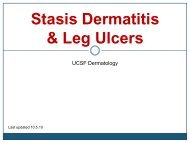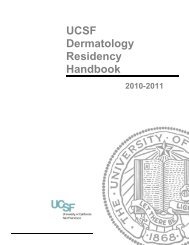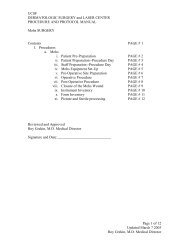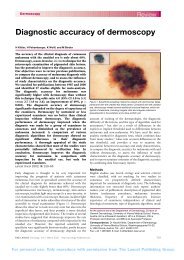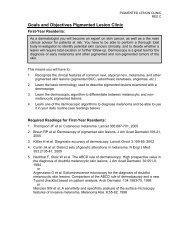An overview of sexually transmitted diseases. Part III ... - Dermatology
An overview of sexually transmitted diseases. Part III ... - Dermatology
An overview of sexually transmitted diseases. Part III ... - Dermatology
You also want an ePaper? Increase the reach of your titles
YUMPU automatically turns print PDFs into web optimized ePapers that Google loves.
J AM ACAD DERMATOL<br />
VOLUME 43, NUMBER 3<br />
In addition, one study noted an increased rate <strong>of</strong> biologic<br />
false-positive findings among those HIV<br />
patients who acquired their disease through intravenous<br />
drug abuse and in those who were coinfected<br />
with the hepatitis B virus (HBV), as compared<br />
with homosexual HIV-positive controls. 94 Other<br />
Czelusta, Yen-Moore, and Tyring 413<br />
Fig 3. HIV-positive patient. Biopsy-confirmed, seronegative secondary syphilis.<br />
Fig 4. Photomicrograph <strong>of</strong> biopsy specimen <strong>of</strong> secondary syphilis shows dense lichenoid infiltrate<br />
with abundant plasma cells and histiocytes.<br />
abnormalities reported in serologic tests involve<br />
delayed titer responses after treatment <strong>of</strong> syphilis in<br />
HIV-infected patients. Typically, a patient’s biologic<br />
titers are expected to drop 4-fold after treatment. In<br />
HIV-infected patients, studies have documented<br />
both a normal serologic titer response after syphilis




